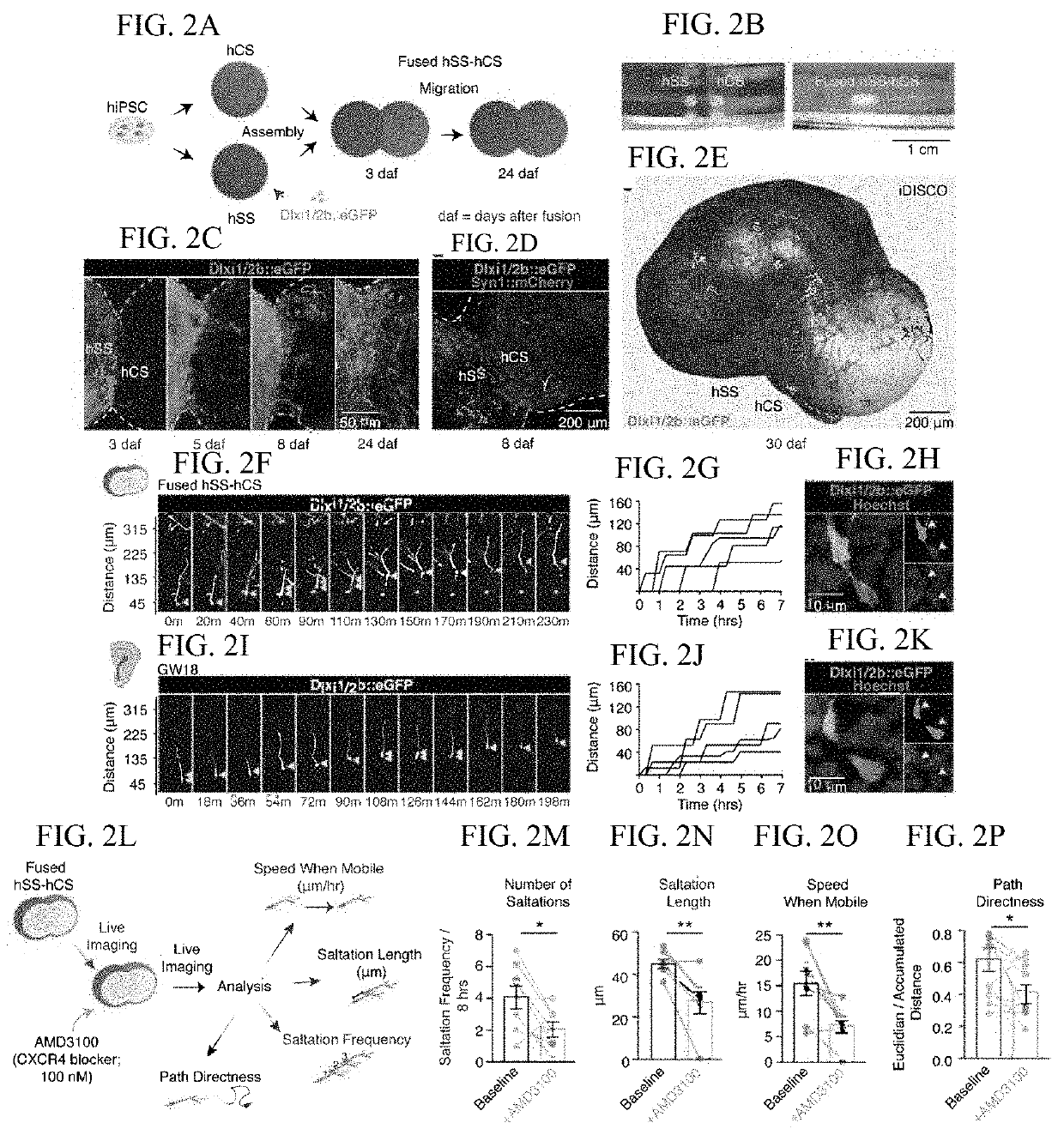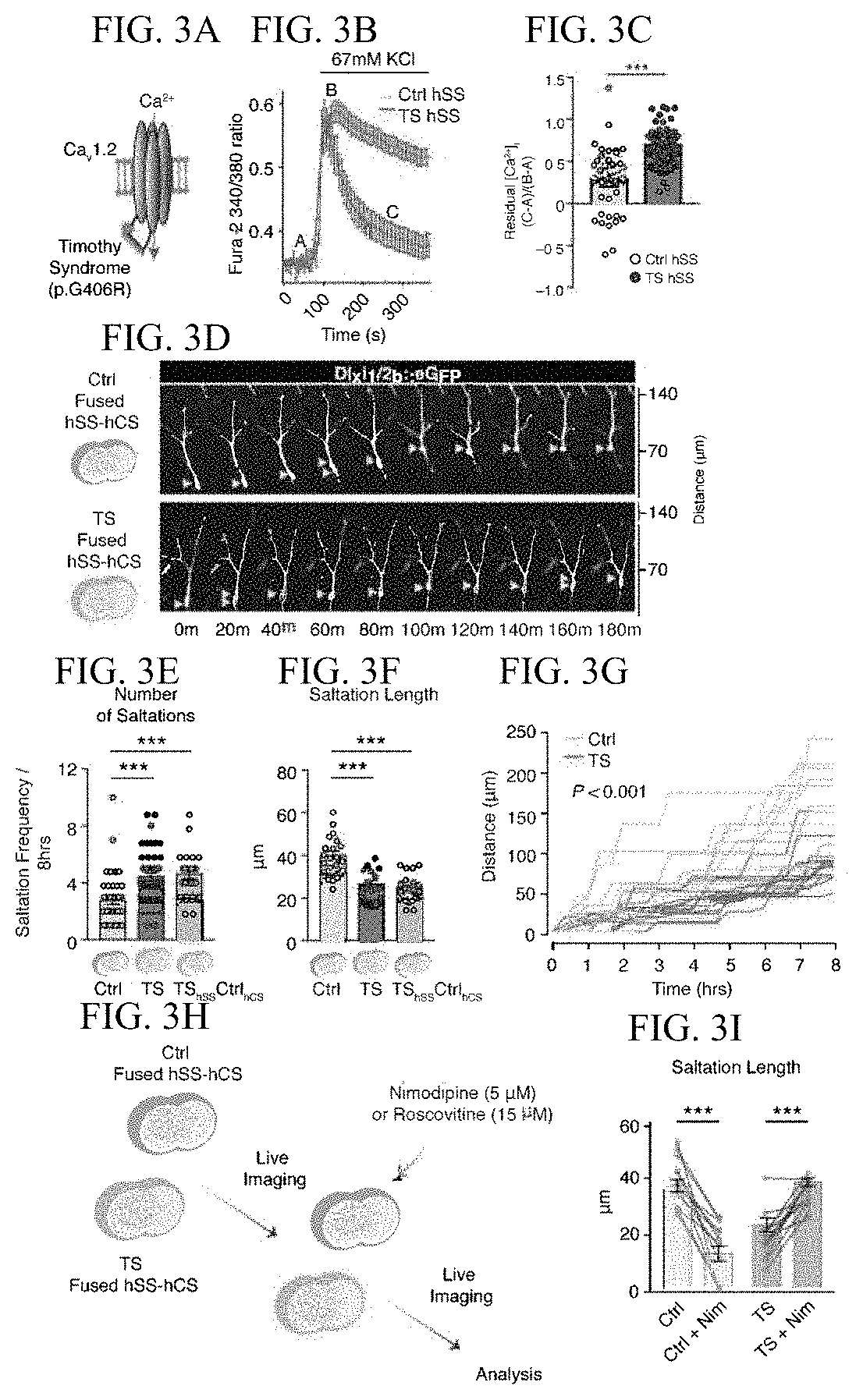Assembly of functionally integrated human forebrain spheroids and methods of use thereof
a functionally integrated human and forebrain technology, applied in the field of assembly of functionally integrated human forebrain spheroids and methods of use thereof, can solve the problems of limited access to functional human brain tissue, many human specific features, and inability to understand the complex development of the human central nervous system and elucidate the mechanisms of neuropsychiatric disorders in patients, and achieve the effect of great accuracy
- Summary
- Abstract
- Description
- Claims
- Application Information
AI Technical Summary
Benefits of technology
Problems solved by technology
Method used
Image
Examples
example 1
Assembly of Functionally-Integrated Forebrain Spheroids from Human Pluripotent Cells to Study Development and Disease
[0138]The development of the central nervous system involves a coordinated succession of events including the long-distance migration of GABAergic neurons from the ventral to the dorsal forebrain and their integration into cortical circuits. Defects in these processes have been associated with brain disorders and pluripotent stem cells (hPSC) hold promise in dissecting the underlying pathophysiology in humans. However, these interregional interactions have not yet been modeled with human cells. Here, we describe an approach for generating from hPSCs neural 3D spheroids resembling either the ventral forebrain and containing GABAergic interneurons—subpallial spheroids (hSS), or the dorsal pallium and containing glutamatergic neurons—cerebral cortical spheroids (hCS). We show that these subdomain-specific forebrain spheroids can be assembled in 3D in vitro to recapitulat...
PUM
 Login to View More
Login to View More Abstract
Description
Claims
Application Information
 Login to View More
Login to View More - R&D
- Intellectual Property
- Life Sciences
- Materials
- Tech Scout
- Unparalleled Data Quality
- Higher Quality Content
- 60% Fewer Hallucinations
Browse by: Latest US Patents, China's latest patents, Technical Efficacy Thesaurus, Application Domain, Technology Topic, Popular Technical Reports.
© 2025 PatSnap. All rights reserved.Legal|Privacy policy|Modern Slavery Act Transparency Statement|Sitemap|About US| Contact US: help@patsnap.com



